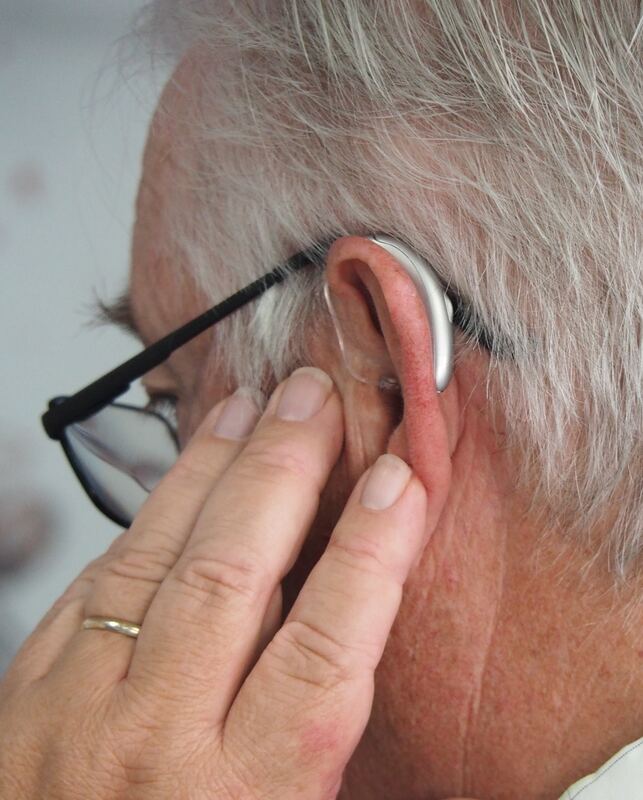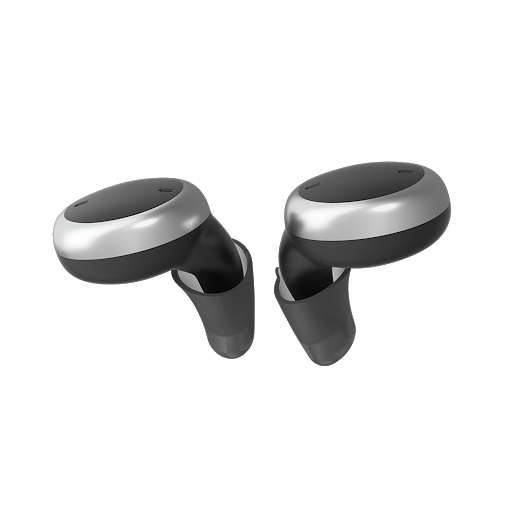|
Everyone knows that hearing aids help make sounds louder for people who have hearing loss, but that is where those similarities end. Hearing aids are unique and have different power levels, amplification abilities, sizes, smartphone compatibility, etc. The style, model, daily lifestyle, and hearing needs are also part of the conversation with your hearing aid provider.
Here are some questions that you might go over:
These questions will help your provider determine which hearing aids are best for you and how to program them for your listening needs. People’s voices will be easier to hear while drowning out background noises. A hearing instrument specialist will help you during your fitting and trial period. Some people with hearing loss wait years until they get help for their hearing loss - this can be due to not being aware that they are losing their hearing, financial reasons, or just plain stubbornness. When you first start with hearing aids, noises that you have not heard for a long time might come across as sounding very loud and annoying -- the clacking of a typewriter or the rushing sound of water. Hearing aids have become so advanced that users can hear speech sounds while blocking out or training their brains to ignore annoying background noises. If you or a loved one are experiencing hearing loss and need help choosing hearing aids, please contact us at Pure Sound Hearing for a complimentary hearing test and consultation with one of our hearing instrument specialists. Modern hearing aids allow users to adjust the volume and clarity of their environment.
They help give their hearing aids optimal performance while bringing better awareness to a person’s surroundings. The fastest and easiest way to achieve this is by using hearing aid programs. What are hearing aid programs? A program for hearing aids is a pre-set sound setting to help you hear better in a particular environment. It can be indoors, like in a dining setting, or outside, like at a park. Based on your lifestyle, you might have a program for the outdoors titled “Outdoors.” A program for a place you regularly visit might be called “Dining.” Why are hearing aid programs needed? You might come across various listening environments each day. It might be a busy, crowded space like a dining hall or a quieter location like a healthcare appointment in a private office. Even PA announcements or a hearing loop connection to a theater’s speaker systems need a program or additional setting you can switch to. Different areas require different hearing aid settings. How are hearing aid programs implemented? It’s easy to use a hearing aid program. Some are automated, depending on the type of hearing aid you have. Or, you can select the applicable program setting when you arrive at the equivalent location. If you go into the same grocery store often frequented, the hearing aid setting automatically switches, or you may need to manually switch from the previous program setting to the “grocery store” setting. Hearing aid program categories There are two types of hearing aid programs available - professional and custom. Professional Professional programs are the most common programs that your hearing aid provider can set up. A hearing aid provider/hearing instrument specialist will create settings based on discussions about your lifestyle and listening priorities. For example, “Personal” (like your daily hearing setting), “Appointments” (for healthcare or other appointments), “Restaurant” (for dining out), “Outdoors” (for time spent outside), etc. Custom Anyone who is more tech-savvy and finds it easy or is more adventurous to play with new technology can use custom-programmed settings. The user can create their own settings for the environments they frequent. Your hearing instrument specialist can help you assess the best program settings and how to operate these programs. The programs might switch on automatically, or you open them with a simple app on your smartphone. Schedule an appointment with one of our hearing instrument specialists for a hearing aid trial today. In the past, there have been strong cases that presumed the interconnectedness of hearing and brain health. New data is helping to back up that speculation.
The Lancet published a study this year that hearing aids can significantly lower the risks for the onset of dementia. This research maintains the understanding that seeking help and treatment for hearing loss might protect and improve cognitive abilities. How and why is healthy hearing crucial for proper cognitive function? How are hearing aids helpful for someone’s brain and overall health? The Relationship between Dementia, Hearing problems, and Hearing aids For some, hearing aids may only be known to improve hearing. More benefits come with wearing them, like a user’s ability to process sounds. Hearing loss can make traditional learning experiences more challenging, as processing new information can become daunting. If you can’t hear clearly, struggling to hear can lead to listening fatigue. In addition to exhausting efforts to listen, hearing loss has a connection to increased brain shrinkage. This phenomenon can occur through atrophy or loss of brain tissue. Hearing loss can lead to social isolation, which can lead to dementia. The inability to hear can lead people to withdraw from others. Socializing with others stimulates the brain, which can prevent atrophy in the brain while helping overall cognitive function. Hearing aids, Socializing, Cognitive Function, and Overall Well-Being As mentioned, socializing is necessary for cognitive function. It helps reduce loneliness, isolation, and depression. These are all risk factors for dementia. Healthy hearing is crucial for enjoyable socializing. In the same way that impaired vision stops people from seeing everything around them, hearing loss can prevent people from hearing in their environment - that’s part of a healthy social life. The National Academies of Sciences, Engineering, and Medicine reported that withdrawing from socializing increases dementia by 50%. Hearing aid usage can change that. The ability to hear a simple conversation can exercise your brain. Active listening, remembering something from the past, and expressing yourself can improve cognitive function. Hearing aids can make socializing easier while being more aware of your environment. You can calm any worries about your safety when there’s a better awareness of your surroundings. If you are in your home or a public space and there’s an emergency, hearing aids will help you become alert to those emergencies. If you don’t have hearing aids, or they are not working, figure out a different means of communication. That can include texting or writing things down using a pen and paper. Hearing aids can help lower the chances of falls due to imbalance. Your balance and hearing are interconnected. According to The Lancet, about 8% of dementia cases are preventable through professional hearing intervention. Hearing aid users have 19% less risk of cognitive decline and 17% less possibility of dementia than those who have not had their hearing loss treated. Johns Hopkins Bloomberg School of Public Health revealed that dementia is more common among the study’s participants who experience moderate or severe hearing loss - at a 61% higher rate than participants with normal hearing. There were 32% lower cases of dementia among participants who used hearing aids with mild to severe hearing loss. Wearing hearing aids can improve the user’s ability to correctly understand information and perhaps be better at retaining that information. Hearing aids don’t cure anything, including hearing and memory conditions. Instead, hearing aids help users hear better with the hearing abilities that they still have - also known as residual hearing. People may remember things better if they can listen and understand others. The Best Ways to Protect Yourself Against Dementia Protect your hearing and prevent hearing loss. If you are noticing hearing loss, seek help immediately. When you receive a hearing test and if the results indicate hearing loss, the professional who conducted the test may recommend hearing aids or an assistive listening device. Wearing fitted and programmed hearing aids tailored to your specific hearing loss is crucial to reduce any additional hearing loss or cognitive function. If you or a loved one are experiencing hearing loss and believe hearing aids would be beneficial, please contact Pure Sound Hearing for a complimentary hearing test and consultation. |
Categories
All
|
-
products
- Rexton Emerald M 8C RIC
- Rexton inoX CIC 8C
- Rexton Mosaic M 8C BTE
- Rexton Mosaic P 8C BTE
- Rexton Stellar RIC 8C
- Rexton Sterling 8C CIC / IIC
- Rexton Sterling 8C ITE / ITC
- Rexton Emerald XS 8C RIC
- Rexton Emerald S 8C RIC
- Signia Active Pro
- Signia CROS AX
- Signia CROS Hearing Solutions
- Signia Insio Charge&Go AX
- Signia Insio Nx IIC/CIC
- Signia Insio Nx ITC/ITE
- Signia Intuis 3 Family
- Signia Motion Charge&Go X
- Signia Motion 13 Nx/Motion 13 P Nx
- Signia Prompt
- Signia Pure Charge&Go AX & T AX
- Signia Pure 312 AX
- Signia Pure 10 Nx
- Signia Pure 13 BT
- Signia Pure 13 Nx
- Signia Silk X
- Signia Styletto AX
- Signia Styletto X
- SERVICES >
- about
- blog
- Insurance
- contact
|
© 2023 Pure Sound Hearing Aids. All Rights Reserved.
|
Proudly powered by Weebly
-
products
- Rexton Emerald M 8C RIC
- Rexton inoX CIC 8C
- Rexton Mosaic M 8C BTE
- Rexton Mosaic P 8C BTE
- Rexton Stellar RIC 8C
- Rexton Sterling 8C CIC / IIC
- Rexton Sterling 8C ITE / ITC
- Rexton Emerald XS 8C RIC
- Rexton Emerald S 8C RIC
- Signia Active Pro
- Signia CROS AX
- Signia CROS Hearing Solutions
- Signia Insio Charge&Go AX
- Signia Insio Nx IIC/CIC
- Signia Insio Nx ITC/ITE
- Signia Intuis 3 Family
- Signia Motion Charge&Go X
- Signia Motion 13 Nx/Motion 13 P Nx
- Signia Prompt
- Signia Pure Charge&Go AX & T AX
- Signia Pure 312 AX
- Signia Pure 10 Nx
- Signia Pure 13 BT
- Signia Pure 13 Nx
- Signia Silk X
- Signia Styletto AX
- Signia Styletto X
- SERVICES >
- about
- blog
- Insurance
- contact




 RSS Feed
RSS Feed